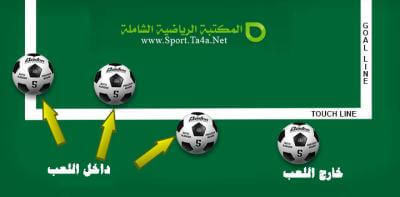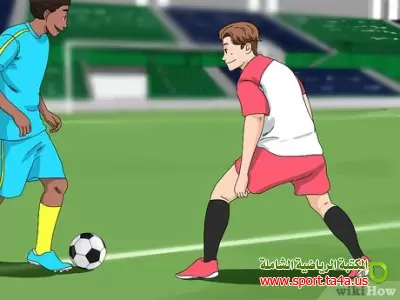GSSA Recreational Soccer

GSSA Recreational Soccer
Age Appropriate Soccer Skills
Passers (6 & 7)
- Simple inside foot passing
- Simple inside foot trapping
- Simple dribbling
- Simple throw-in
- Simple shooting
- Rules
- Handball
- No Goalkeeper
Wings (8 & 9)
- Inside foot passing
- The foot not kicking the ball should be planted alongside the ball at the time of impact.
- The hips and shoulder should be square to the player receiving the pass. An easy explanation for younger players is to have their belly button pointing at their target.
- The kicking foot should be turned out and the ball struck with the inside of the foot.
- The kicking leg should follow through towards the target.
- Inside foot trapping
- Getting in front of the ball.
- Extending the leg and foot forward of the body, anticipating the arrival of the ball.
- Upon contact with the foot, the player should pull the leg back to slow the ball, or ‘cushion’ the ball. If the foot is not pulled back, the ball will carom off the foot and out of control of the player. Get the player to think about catching an egg!
- Dribbling
- Keep the head up.
- The closer an opponent, the closer the ball should be kept to the player.
- Shield the ball from opponents. This involves the use of the body as a ‘shield’. Have the player turn their back to an opponent and turn with the opponent as they try to go around, then pass or break for an ‘open spot’.
- Never run faster than the ball can be controlled. Instead, stop and shield the ball and figure out your next move. Remember, "There is always someone faster, but not necessarily smarter".
- When making a break towards the goal or another teammate, push the ball several feet ahead, allowing the player to begin the sprint.
- Throw-ins
- Both feet must stay on the ground
- Can stand on or behind the side line
- Ball must go behind the head
- Must use both hands equally (can't use only one hand & if there is a lot of side spin the referee may say one hand was used too much)
- Beginners should throw toward the other team's goal
- Shooting
- The foot not kicking the ball should be planted behind and beside the ball slightly at the point of impact. This allows the energy of the forward weight transfer to be generated before contact is made with the ball.
- The player will need to point his toe to the ground as the kicking foot is moved forward, which will also requiring bending the knee.
- The kicking foot should make contact with the lower two-thirds of the ball. The degree to which the toe is pointing down will determine the amount of loft influenced on the ball
- The kicking leg should follow through towards the target.
- Rules
- Offsides
- Handball
- Dangerous Play
- Kicks
- Corner
- Goal
- Indirect
- Goalie
- Goalies can only use their hands inside the penalty area, but can interact with the ball anywhere on the field.
- When catching the ball, the goalie should pull the ball tightly into the body. And with younger players, teach them to ‘cuddle’ the ball on the ground and keep their body in front of the ball so that the shins, knees and feet also help stop the ball. This will reduce the number of injured hands and fingers by over ambitious opponents.
Strikers (10 & 11)
- Inside foot passing
- The foot not kicking the ball should be planted alongside the ball at the time of impact.
- The hips and shoulder should be square to the player receiving the pass. An easy explanation for younger players is to have their belly button pointing at their target.
- The kicking foot should be turned out and the ball struck with the inside of the foot.
- The kicking leg should follow through towards the target.
- Outside foot passing
- Trapping - Foot
- Getting in front of the ball.
- Extending the leg and foot forward of the body, anticipating the arrival of the ball.
- Upon contact with the foot, the player should pull the leg back to slow the ball, or ‘cushion’ the ball. If the foot is not pulled back, the ball will carom off the foot and out of control of the player. Get the player to think about catching an egg!
- Trapping – Thigh
- Get in front of and square to the incoming ball. Standing on one foot, raise the other knee and thigh to meet the ball.
- Upon contact, quickly drop the knee, allowing the ball to momentarily ‘stick’ to the thigh.
- Continue dropping the knee until the ball rolls from the thigh to the feet.
- Trapping – Chest
- Get in front of and square to the incoming ball. The chest should be ‘pushed-out’ to meet the incoming ball. The arms may need to be up or out to offset the loss of balance coinciding with impact, depending upon the speed of the ball. Note: With younger players, getting the arms in front will result in a handball 90% of the time.
- The chest should be pulled back quickly from the waist at the moment of impact. The players’ should try to get the feeling of the ball ‘sticking’ to their chest.
- Once cushioned, the ball can be dropped to the player’s feet for further action.
- Advanced dribbling
- Advanced throw-in
- Shooting
- Heading
- First and foremost, the player must keep their eyes on the ball and ALWAYS keep their mouth closed. Otherwise, players will have a tendency to bite their tongues upon impact. Ouch!
- Keep the feet apart and stay balanced and ‘cushion’ the impact of the ball. The player should be relaxed upon impact.
- After impact and cushion, the player should stiffen the neck and chest muscles while driving the ball forward to the target.
- Rules
- Goalie
Kickers (12 & 13)
- Inside & outside of foot passing & receiving
- Dribbling
- Simple throw-in
- Shooting
- Heading
- Tackling
- Rules
- Goalie

برجاء ذكر المصدر حتى تعم الفائدة :المكتبة الرياضية الشاملة : GSSA Recreational Soccer
الحد الأدنى لطول التعليق هو 255 حرفا. التعليقات خاضعة للإشراف
المقالات التي قد تهمك أيضا:

Ball Evolution
Ball Evolution 3000 Years Ago Who knows when the game began? Kicking is a fairly instinctive activity so no doubt Stone Age man gave a rock or bone the occasional thump with his foot and then perhaps

قانون كرة القدم : مادة (9) الكرة في اللعب وخارج اللعب
قانون كرة القدم : مادة (9) الكرة في اللعب وخارج اللعب الكرة خارج اللعب: تعتبر الكرة خارج اللعب عندما: * تجتاز الكرة بكاملها خط المرمي أو خط التماس سواء على الأرض أو في الهواء. * عندما يوقف الحكم

Soccer Strength Training and Conditioning
Soccer Strength Training and Conditioning Soccer is a game that is extremely demanding and is dependent upon many different athletic qualities. Speed, agility, power, quickness, flexibility,

الدفاع فى كرة القدم
الدفاع فى كرة القدم الدفاع : هو عبارة عن عملية تنظيم تحركات المدافعين ضد هجوم الفريق الخصم وإفشال خطة الهجوم عن طريق تنظيم المدافعين في منطقة الجزاء والقيام بالدفاع ألفرقي وسد الثغرات أمام المهاجمين

